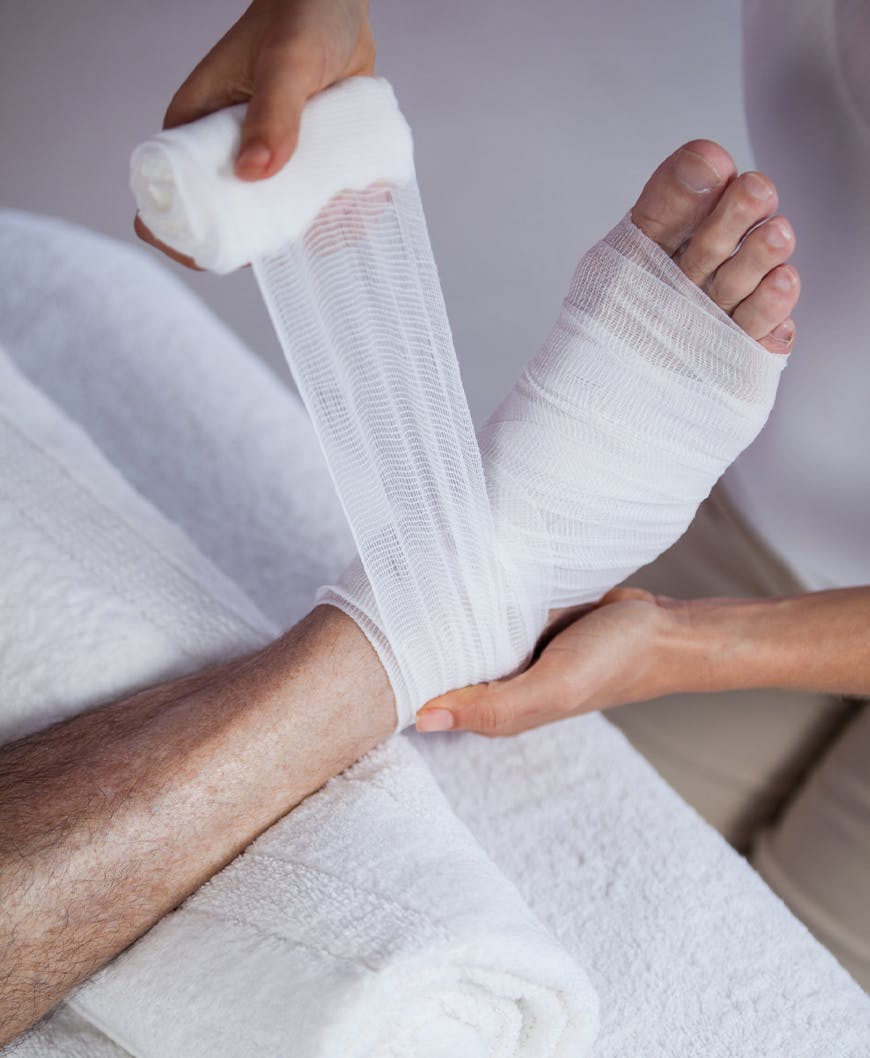When discussing physical injuries, “trauma” refers to physical injuries occurring as a result of some external physical event, such as cuts, bruises, or broken bones: the type of injuries you might expect from a car accident, a fall, sports, a work accident, or a fight.
Types of Foot Trauma
Foot trauma comes in many forms, from mild cuts and bruises to severe traumatic injury associated with shock, or even the potential loss of limb. Common types of foot trauma include:
- Sprains. Stretched or torn ligaments are perhaps the most common form of significant foot trauma, often resulting from falls, rolled ankles, uneven ground, etc.
- Strains. Strains occur under similar circumstances to sprains, but instead affect the tendons and muscles of the foot.
- Lacerations. Cuts can vary in severity from the type that only requires a bandage to ones that require stitches, shots for tetanus, and aggressive use of antibiotics to avoid infection (depending on the nature of the injury).
- Abrasions. Scrapes and similar injuries from moving your foot across rough surfaces usually aren’t too severe, but can be at high risk of infection depending on the surface involved and whether any residue is left in the wound.
- Punctures. Deep wounds from pointed objects are at a high risk of infection, and are a fairly common form of accidental foot trauma due to the ease of stepping on a nail or other sharp object. These often demand more attention than seems necessary at a glance.
- Contusions. Bruising of the foot can vary in severity from simple discoloration and tenderness that heal in a single day to deep bone bruises which demand months of recovery. Contusions are common as an addition to nearly any other injury.
- Fractures. With over 26 bones in each foot, there’s plenty of potential for fractures as a result of traumatic force. Overuse can also frequently trigger less serious stress fractures.
- Dislocations. This is a type of injury in which the bone ends of a joint are forced out of place, deforming and immobilizing the joint. Dislocations often damage adjacent tissues, especially if corrected poorly.
- Crush injury. Crush injuries result from an object compressing your foot. This injury is common in natural disasters, accidents, and deliberate attacks. They can have serious complications, such as crush syndrome and compartment syndrome — potentially limb- or life-threatening conditions.







